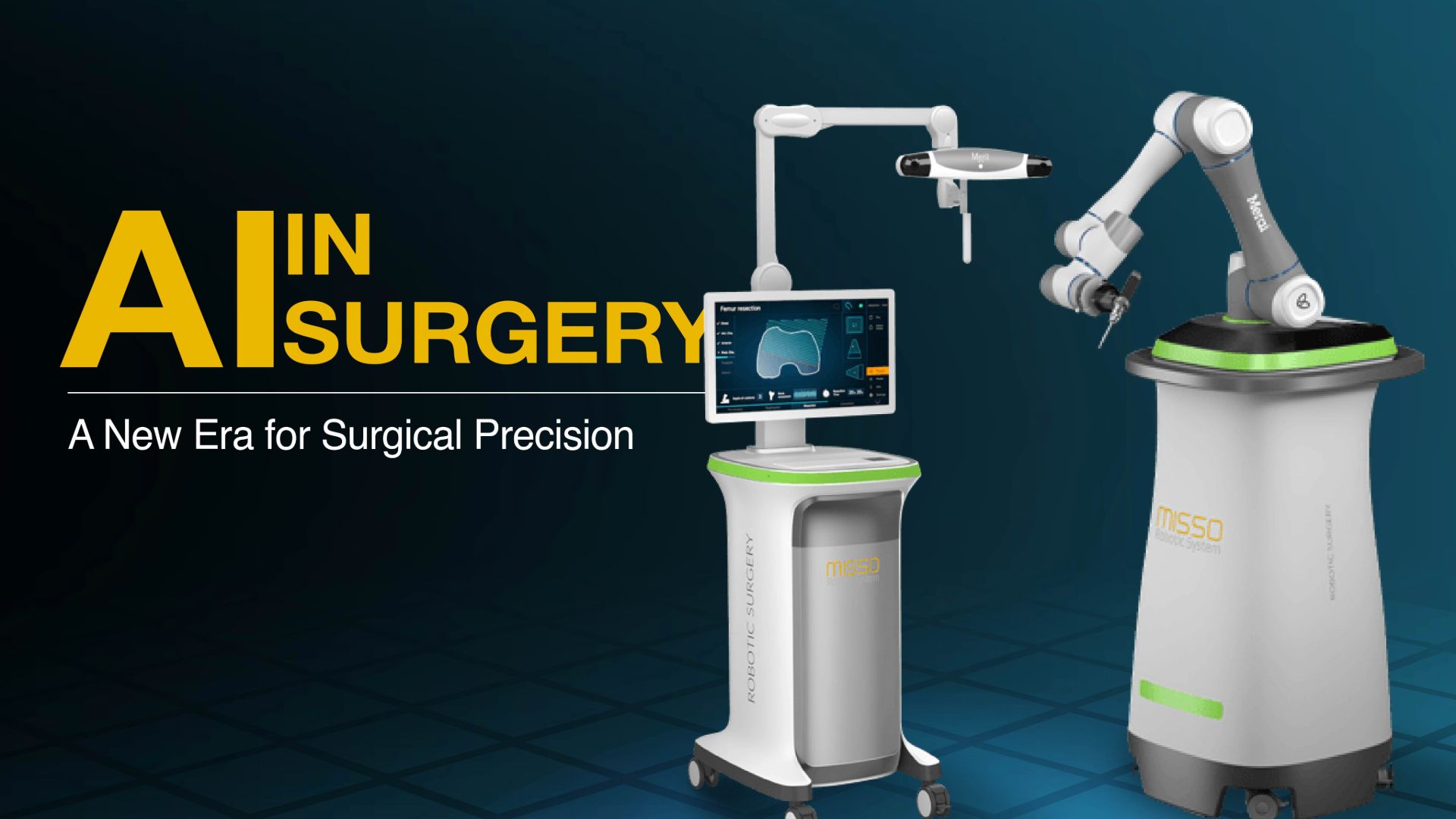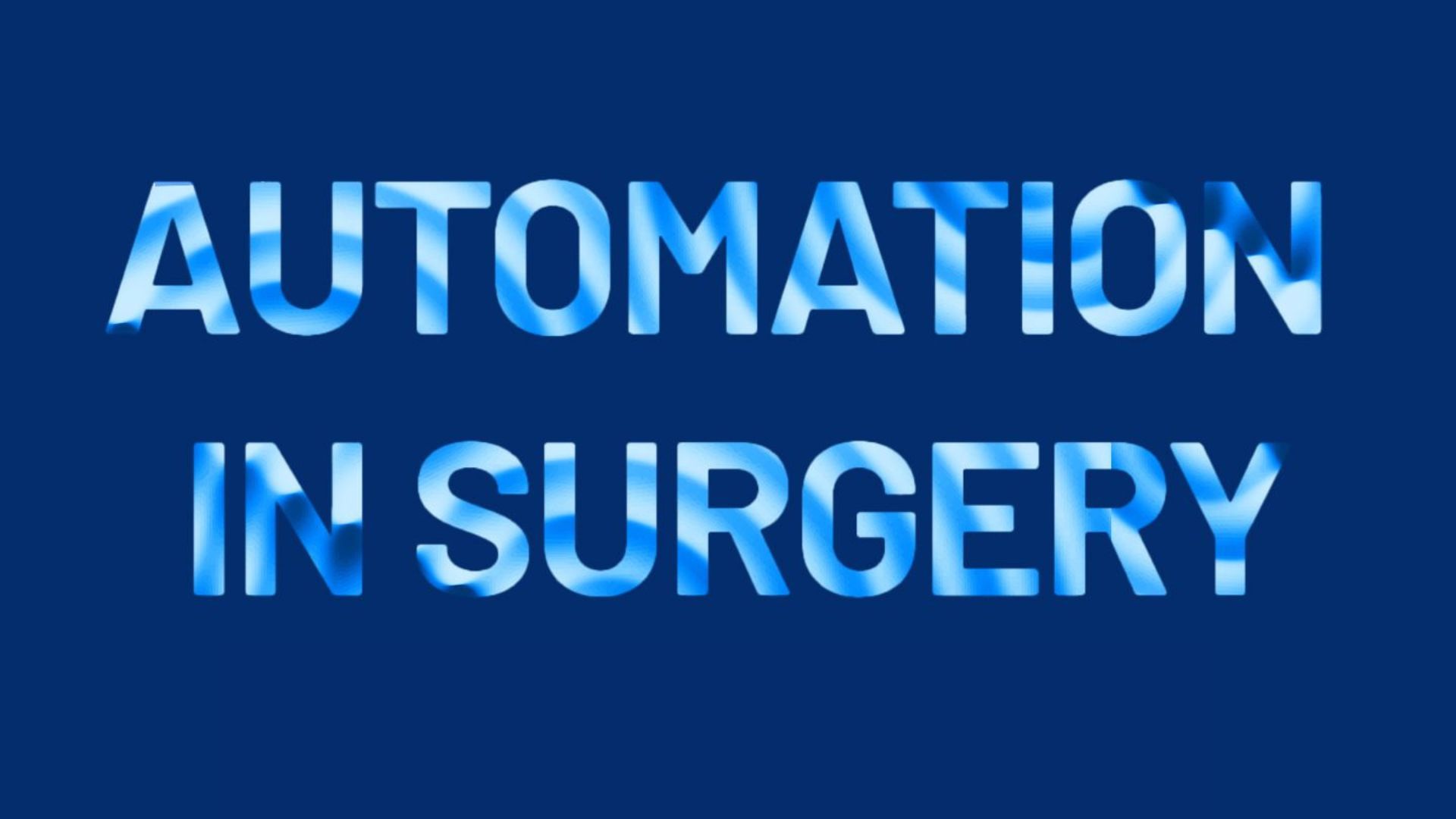
AI in Surgery: A New Era for Surgical Precision
Introduction
Artificial intelligence (AI) in surgery originated as a concept decades ago, with computer-assisted systems designed to support diagnosis. Early systems in the 1970s combed through data to diagnose and suggest prescriptions for bacterial infections, which evolved to generating complex diagnostic hypotheses and solving medical riddles. By the 2000s, AI-driven robotic platforms began translating a surgeon’s hand movements into scaled, tremor-filtered micro-movements, marking a milestone in computer-assisted surgery.[1]
How AI is Leading the Way
In the past few years, AI has transcended its role in an assisting capacity to become a central force in surgical precision. Some of the AI technologies used in healthcare include machine learning (ML), deep learning (DL), and natural language processing (NLP).[2]
A recent review highlights how ML and DL methods are enhancing intraoperative guidance, planning, and training outcomes. Furthermore, AI-driven systems show high accuracy in surgical approaches. Systematic reviews further report a 25% improvement in complication-prediction accuracy and an 18% reduction in intraoperative errors across general surgery, with complex procedures shortened by an average of 30 minutes (from 150 to 120 minutes).[2,3]
AI is also transforming robotic surgery in a significant way by boosting precision, enhancing intraoperative safety, and improving outcomes. With machine learning, real-time imaging, and sensor data, AI-driven systems now perform complex procedures with greater accuracy and minimal invasiveness. [4,5,6]
Precision In and Outside the Operating Room
AI is now increasingly being used in surgery for preoperative planning. Its capacity to quickly analyse vast amounts of data, combined with reports and patient histories, enables surgeons to draw up effective and predictive patient-specific strategies.[4]
Studies also highlight the transformative impact of AI in preoperative planning, anatomical mapping, intraoperative guidance, and postoperative outcomes. AI has improved the accuracy of robotic surgery by supporting decision-making through real-time imaging, sensors, monitors, and algorithms.[7]
Deep learning models now excel at recognising and segmenting surgical instruments in real time, improving guidance and surgeon feedback, and reducing complications during minimally invasive procedures.[8]
In orthopaedics specifically, the combined benefits of robotics and AI are gaining real traction. In knee and hip arthroplasty, robotic systems guided by AI-based navigation improve the accuracy of implant positioning, adapt to anatomical variance between patients, offer intelligent safety systems, reduce trauma and infection rates, and offer quicker recovery, thereby improving consistency of outcomes.[9,10] Moreover, AI and machine learning have been employed in current systems to generate surgical trajectories, facilitate intraoperative decision support, facilitate real-time analysis of the surgical field with haptic feedback, and integrate systems for accurate diagnosis and detection for patient safety.[11]
AI also plays a critical role in postoperative patient monitoring. Sensors and complex predictive data analyses enable the systems to foresee and prevent many complications, and cater to patient-specific needs.[4]
As robotics matures, the integration of AI enables semi-autonomous control, dynamic adaptation to intraoperative variability, and predictive outcome modelling, making the future of AI-enhanced orthopaedic robotics particularly promising.
A recent review reported successful robotic-assisted knee arthroplasty using platforms, such as Meril’s MISSO Robotic System, representing a significant advancement using AI and autonomous systems to achieve surgical precision and improved patient outcomes. Furthermore, these findings are bolstered by a recent study where AI-trained robots successfully performed complex surgeries with a 100% success rate, adapting to anatomical variations in real-time. These developments point to a future of intelligent, adaptive robotic surgery. [12,13]
MISSO Robotic System: Meril’s Indigenous AI-Integrated Solution
Meril’s MISSO Robotic System is an advanced AI-powered surgical robotic system designed to enhance precision, safety, and patient outcomes in joint replacement surgeries.
Built to assist and supplement a surgeon’s skills during joint replacement procedures, MISSO blends AI-driven planning, real-time feedback, and precise robotic execution to reduce variability in bone resections and optimise implant alignment. Built with a six-axis robotic arm, advanced tracking sensors, and safety systems, MISSO operates with sub-millimetric accuracy while preserving the surgeon’s decision-making authority.
With intraoperative adaptability and continuity between planning and execution, MISSO seeks to elevate consistency, safety, and outcomes in joint replacement procedures—quietly supporting surgeons to achieve their best performance repeatedly, without fatigue holding them back. Rather than replacing the surgeon, MISSO aims to refine surgical execution—reducing variability in bone cuts and optimising implant alignment, while offering surgeons the real-time advantage of adapting surgical plans to patient anatomies on the go.
For patients, this translates to significant clinical advantages: smaller incisions and less scarring, reduced blood loss, and lower postoperative pain, all of which minimise infection risk and enhance recovery. These benefits contribute to shorter hospital stays, faster return to daily life, and better cosmetic and functional outcomes.
By combining robotic precision with AI-driven intelligence, MISSO represents a new benchmark in minimally invasive orthopaedic care: empowering healthcare professionals to deliver safer, more effective, and patient-centred surgical interventions through next-gen AI-powered guidance, planning, and mapping.
Conclusion
From early computer-assisted systems to AI-powered robotics and MISSO, surgical precision is advancing rapidly. Multi-modal AI, spanning imaging, predictive modelling, real-time guidance, and semi-autonomous execution, are reshaping outcomes.
With the advent of AI-driven autonomous surgical systems, staying informed and engaged with these technologies is essential for healthcare professionals to enhance patient safety, optimise workflows, and forge the future of surgery.



